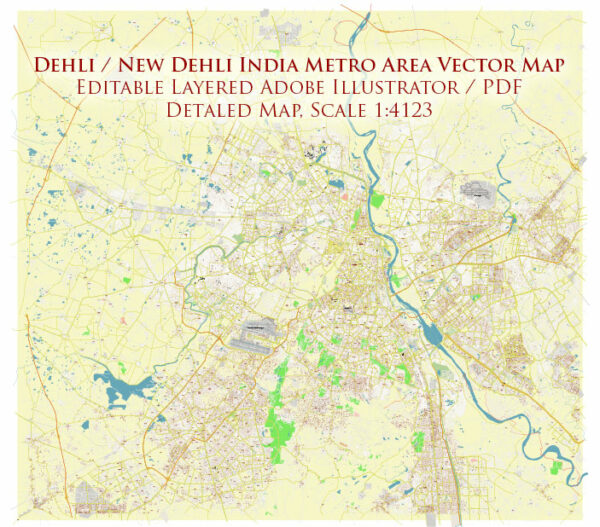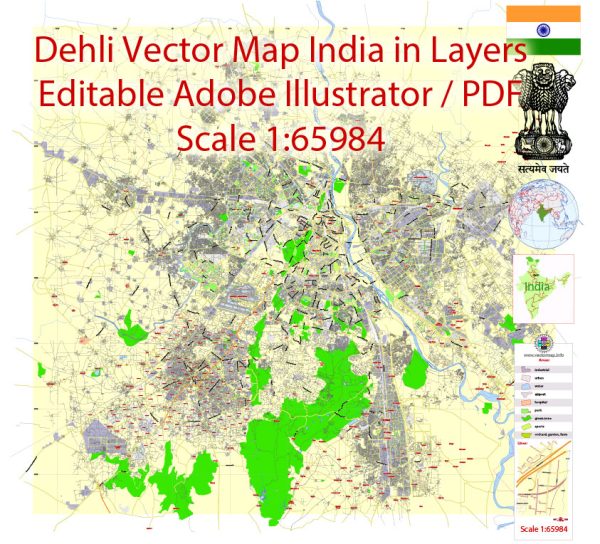Delhi, the capital of India, has a rich and complex urban development history that reflects the country’s diverse culture and evolving needs. Here is a description of Delhi’s urban development:
- Historical Significance: Delhi has a long history that dates back to ancient times. It has been the capital of various dynasties and empires, including the Maurya, Mughal, and British Empires. Each period has left its mark on the city’s urban development, resulting in a unique blend of historical, architectural, and cultural influences.
- Expansion and Growth: Delhi has experienced significant population growth and urban expansion in recent decades. This rapid growth has presented both opportunities and challenges for urban planners and policymakers.
- Administrative Structure: Delhi’s urban development falls under the jurisdiction of several administrative bodies, including the Delhi Development Authority (DDA), the Municipal Corporation of Delhi (MCD), and the New Delhi Municipal Council (NDMC). The coordination among these agencies is essential for effective urban planning and governance.
- Infrastructure Development: Delhi has invested heavily in infrastructure development, including roads, public transportation, and utilities. The city has a well-developed metro system, which has greatly improved connectivity and reduced traffic congestion. Major road projects, like the Delhi-Mumbai Expressway and peripheral expressways, have been initiated to improve transportation and reduce pollution.
- Housing and Real Estate: The city has seen a surge in residential and commercial real estate development. Gentrification and the construction of high-rise buildings have changed the city’s skyline, with many areas becoming upscale residential and commercial hubs. However, affordable housing remains a significant concern.
- Green Spaces: Delhi has several parks and green spaces, including the famous Lodhi Gardens, Nehru Park, and the Garden of Five Senses. These green areas provide residents with recreational opportunities and contribute to the city’s overall quality of life.
- Conservation and Heritage: Delhi is home to numerous historical landmarks and heritage sites, such as the Red Fort, Qutub Minar, and Humayun’s Tomb. Preservation and restoration efforts are ongoing to protect these cultural assets and promote tourism.
- Environmental Challenges: Delhi faces several environmental challenges, including air pollution, water pollution, and waste management issues. The government has implemented measures to address these issues, such as the Odd-Even scheme for controlling vehicular pollution and efforts to reduce single-use plastic.
- Smart City Initiatives: The government has launched smart city initiatives to make Delhi more efficient, sustainable, and technologically advanced. These initiatives focus on using technology to improve services, infrastructure, and urban governance.
- Future Planning: Delhi’s urban development continues to be a work in progress. Planners are looking to address challenges related to traffic congestion, pollution, and affordable housing while preserving the city’s heritage and culture.
In summary, Delhi’s urban development is marked by a blend of historical and modern elements, with ongoing efforts to improve infrastructure, address environmental challenges, and create a sustainable and livable city for its diverse and growing population.




 Author: Kirill Shrayber, Ph.D.
Author: Kirill Shrayber, Ph.D.